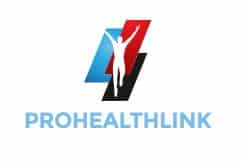Introduction
Creating a Culture of Safety in 10 Easy Steps – In today’s fast-paced and competitive work environment, ensuring the health and safety of employees is paramount. Occupational Health and Safety (OHS) plays a crucial role in protecting workers from workplace hazards and promoting a culture of well-being. This comprehensive guide aims to explore the various aspects of OHS, providing valuable insights and practical tips for organizations to establish and maintain a robust safety culture.
Table of Contents
I. Understanding Occupational Health and Safety A. Definition and Scope of OHS B. Historical Perspective C. Importance of OHS in the Modern Workplace
II. Legal Framework and Compliance A. Overview of OHS Laws and Regulations B. Responsibilities of Employers and Employees C. Penalties for Non-Compliance
III. Identifying Workplace Hazards A. Common Types of Hazards 1. Physical Hazards 2. Chemical Hazards 3. Biological Hazards 4. Ergonomic Hazards 5. Psychosocial Hazards B. Risk Assessment and Management C. Importance of Incident Reporting
IV. Creating a Safety Culture A. Leadership Commitment B. Employee Involvement and Training C. Communication Strategies D. Recognition and Rewards for Safety Excellence
V. Implementing Effective Safety Programs A. Developing a Safety Policy B. Emergency Preparedness and Response C. Health and Wellness Initiatives D. Continuous Improvement Strategies
VI. Personal Protective Equipment (PPE) A. Selection and Proper Use of PPE B. Training on PPE C. Monitoring and Enforcement
VII. Mental Health in the Workplace A. Recognizing and Addressing Mental Health Issues B. Providing Support and Resources C. Destigmatizing Mental Health
VIII. Technology and OHS A. Role of Technology in Safety B. Wearable Devices for Monitoring and Alerts C. Digital Platforms for Reporting and Documentation
IX. Case Studies A. Successful Implementation of OHS in Various Industries B. Lessons Learned from OHS Failures
X. OHS in the Age of Remote Work A. Challenges and Solutions B. Virtual Training and Communication C. Mental Health Considerations for Remote Workers
Table of Contents
I. Understanding Occupational Health and Safety
A. Definition and Scope of OHS
Occupational Health and Safety (OHS) encompasses the identification and control of workplace hazards to protect the health, safety, and well-being of employees. This section will delve into the core concepts, emphasizing the importance of creating a safe working environment.
B. Historical Perspective
Exploring the historical evolution of OHS will provide context for current practices. From early industrialization to present-day standards, understanding the historical development of OHS is crucial for appreciating its significance in contemporary workplaces.
C. Importance of OHS in the Modern Workplace
Highlighting the contemporary relevance of OHS, this section will discuss the direct impact on employee morale, productivity, and organizational reputation. It will emphasize the role of OHS in preventing accidents, reducing absenteeism, and fostering a positive workplace culture.
II. Legal Framework and Compliance
A. Overview of OHS Laws and Regulations
This section will provide an in-depth overview of local and international OHS laws and regulations. Understanding the legal framework is essential for organizations to ensure compliance and avoid penalties.
B. Responsibilities of Employers and Employees
Examining the distinct responsibilities of employers and employees under OHS laws will provide clarity on the shared commitment to workplace safety. This section will underscore the importance of collaboration to create a safer working environment.
C. Penalties for Non-Compliance
Detailing the potential consequences of non-compliance with OHS regulations, including legal penalties and reputational risks, will motivate organizations to prioritize safety. It will also discuss strategies for mitigating risks and maintaining a positive safety record.
III. Identifying Workplace Hazards
A. Common Types of Hazards
This section will categorize and elaborate on common workplace hazards, including physical, chemical, biological, ergonomic, and psychosocial hazards. Recognizing these hazards is the first step in implementing effective preventive measures.
B. Risk Assessment and Management
Detailing the process of risk assessment will guide organizations in identifying potential hazards and evaluating associated risks. This section will also discuss risk management strategies, emphasizing the importance of proactive measures to mitigate workplace risks.
C. Importance of Incident Reporting
Encouraging a culture of incident reporting is crucial for continuous improvement. This section will discuss the significance of reporting near misses and accidents, and fostering a learning culture that contributes to ongoing safety enhancements.













